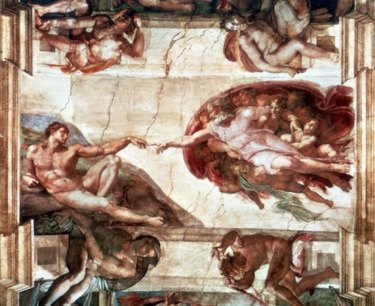
The Gothic period, generally placed between the 12th and 15th centuries in Europe, was characterized by religious art with a focus on architecture. The Renaissance period, which overlaps the Gothic period in early years, is generally considered to have spanned from the late 14th century to the 17th century, and greatly expanded the scope and subject matter of art. Although these two periods have some common characteristics, the Gothic and Renaissance periods have very different points of focus.
Subject
Video of the Day
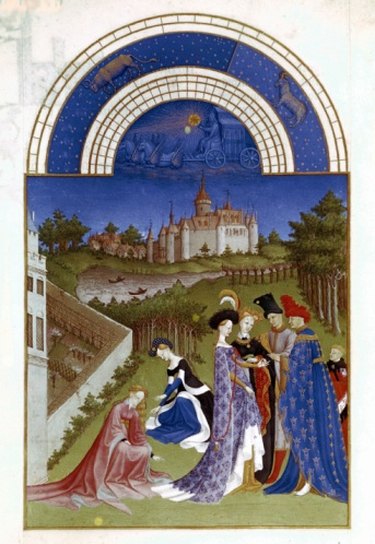
Gothic art was primarily focused on Christian religious figures and themes. Paintings of nudes or figures from mythology were not common in Gothic art. Renaissance art, though, extended its subject matter to pagan mythological depictions, living rulers or aristocrats and other realistic human scenes. Although these new elements were gradually introduced, Christian religious symbolism and depictions were still extremely common, though they were often humanized and made less ideal.
Video of the Day
Worldview
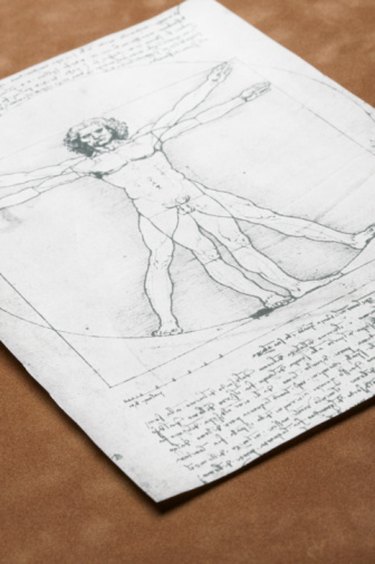
While Gothic art was primarily devotional and religious, Renaissance art was more world-centered, focusing not only on religious figures and visual representations of stories, but on issues such as science and exploration. Due to the many scientific discoveries during the era as well as reports of new worlds, Renaissance painters began to see the world beyond their own towns or countries as worthy of artistic attention. Many Renaissance artists were also scientists and thinkers. Michelangelo, a painter as well as anatomist and inventor, is a primary example of the "Renaissance Man." Because of this change in worldview, Renaissance art often depicted figures such as scientists, explorers and imaginary visions of these "new worlds" based on explorers' accounts. Renaissance art is often called "humanist" because the human figure and human achievement are the focus, rather than religion or the divine.
Architecture and Sculpture
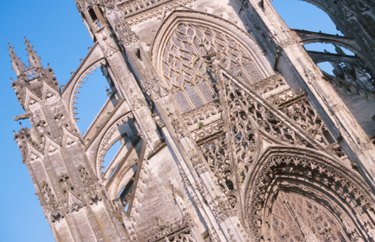
The main art form of the Gothic era is architecture, specifically in the form of cathedrals. It's significant that Gothic architecture was primarily devoted to the building of religious dwellings. Gothic architecture is known for the use of arches that point sharply upward and flying buttresses, which refer to structures that hold up heavy walls. Flying buttresses create the elegant, vertical upward line of Gothic architecture and allow for larger windows, which Gothic artists used to showcase brilliant stained-glass windows. Renaissance architecture featured more Romanesque forms (building a home around a courtyard, for example), often based around circles instead of the vertical, upward movement of Gothic architecture. In the Renaissance, sculpture was far more important than architecture. Sculptures such as Michelangelo's David showed extreme naturalism and an embrace of the nude human form.
Painting
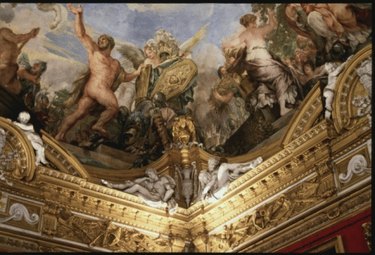
Paintings were less common in the Gothic era than in the Renaissance, and were generally found in churches and in illuminated manuscripts (which refer to books with illustrations). Painting during the Gothic period was often more stiff and less naturalistic than Renaissance painting, though it was much more naturalistic than Medieval art. In Gothic paintings, important figures were often shown as larger than other characters in the painting, which created an unrealistic scale. Painting was a large part of Renaissance art, and Renaissance paintings moved outside of just a church setting. Renaissance artists painted human figures in a highly realistic and naturalistic way. They used shading and color, and often painted figures in highly detailed background settings. In addition, the use of the nude figure became extremely popular during the Renaissance.
- History World; Gothic Art And Architecture; Andrew Henry Robert Martindale
- Encyclopedia of Art: Gothic Art (c. 1150-1375)
- Annenberg CPB; Renaissance; Art and Architecture
- Web Museum; International Gothic Style
- Humanities Hub: Characteristics of Classical, Medieval, and Renaissance Art
- University of Oregon: Renaissance